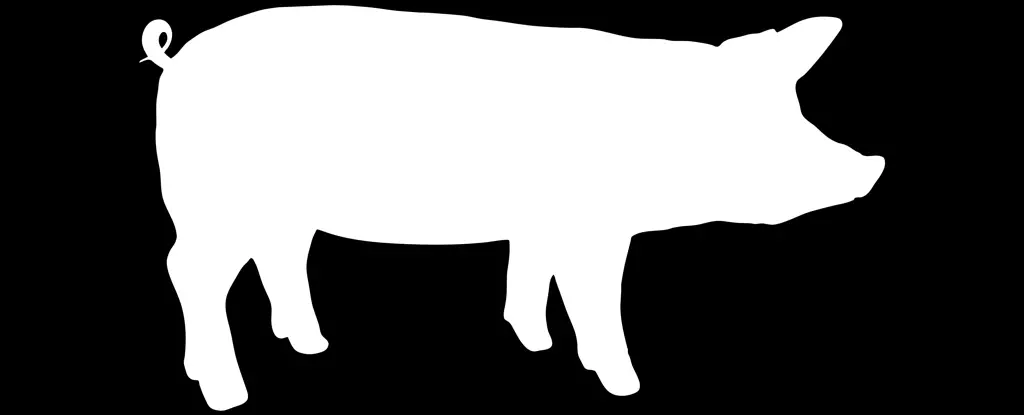Avian influenza, commonly known as bird flu, has long been a concern for health and agricultural experts around the globe. The recent discovery of the H5N1 strain infecting pigs in Oregon represents a significant shift in the landscape of this disease, prompting reflection on its implications for public health. The United States Department of Agriculture’s report indicates that despite a lack of human-to-human transmission, the evolving nature of this virus demands increased vigilance. With reports of the H5N1 strain infecting various species, including poultry and even dairy cattle, it’s critical to assess the trajectory of this virus, particularly with the onset of winter, when seasonal flu incidents typically spike.
Pigs hold a particularly dangerous position when it comes to influenza viruses. Their respiratory anatomy allows them to be infected by both avian and human flu viruses, making them an ideal mixing vessel. This means that with the current strains circulating, there’s a real risk of genetic reassortment, potentially leading to a new strain capable of easily spreading among humans. Prior to recent mutations, H5N1 was less adept at infecting pigs, but recent findings show an alarming tendency for the virus to breach this barrier. In the context of the Oregon case, the infection in a non-commercial pig farm showcases how closely entwined domestic and wild animal populations have become, raising the specter of larger agricultural outbreaks.
The Geographic Spread and Economic Impact
The situation is compounded by the geographical spread of the disease, particularly in Europe and more recently in the United States, where various livestock herds are increasingly impacted. Over 400 dairy herds across 14 states reported infections in early 2024, leading to devastating financial losses for farmers. With the need for culling infected poultry and the risk of dairy products becoming contaminated, the commercial food production landscape faces upheaval. Fortunately, pasteurization processes help mitigate risks for milk consumption, but the broader implications for food security cannot be overlooked.
One of the most pressing concerns amid these developments is the potential for H5N1 to adapt to human hosts. While human infections have primarily occurred in those with direct exposure to infected animals, the possibility of mutations that facilitate easier respiratory transmission among humans remains a danger. Studies have identified concerning mutations within the strain, indicating potential for increased human transmissibility. This evolving strain exemplifies the need for proactive surveillance and early detection within both agricultural and healthcare settings to avoid a possible pandemic scenario.
The prevention of an influenza pandemic relies heavily on effective surveillance systems to detect early signs of outbreaks. Comprehensive testing across both birds and livestock is critical, as is the encouragement of timely reporting from farmers. Financial incentives for farmers can facilitate quicker identification of outbreaks, allowing for more effective response measures. Initiatives aimed at strengthening global influenza surveillance will prove invaluable in early detection, thus reducing the likelihood of a pandemic spreading beyond localized regions.
Furthermore, a robust reporting mechanism for unusual health spikes, such as pneumonia cases with no clear origin, is essential. Quick identification through subtyping—distinguishing between seasonal strains and more dangerous variants—can prevent a delayed response, which can cost lives.
As concerns escalate regarding H5N1, a clear call for heightened governmental preparedness and research funding emerges. Rapid testing technologies that discern between seasonal and pandemic strains of influenza are critical components of any sound public health response strategy. The current risk posed by H5N1 remains classified as low by health authorities, including the Centers for Disease Control and Prevention, but the evolution of the virus underscores a need for a readiness plan that includes the rapid deployment of appropriate vaccines once a pandemic strain is identified.
Countries like Finland are already taking proactive measures, vaccinating high-risk populations such as farm workers. These initiatives highlight the importance of public health coordination in combating potential outbreaks before they escalate.
The recent developments surrounding the H5N1 virus necessitate a renewed emphasis on vigilance and preparedness. The intertwining of animal health, agricultural practices, and human physiology creates a complex landscape that demands comprehensive strategies for prevention and response. As this rapidly evolving situation unfolds, fostering a culture of proactive health surveillance, rapid adaptation of public health policies, and community awareness will be essential to mitigate the impact of avian influenza on both livestock and ultimately, human health. The time to act is now—before a potential crisis becomes a reality.


Leave a Reply